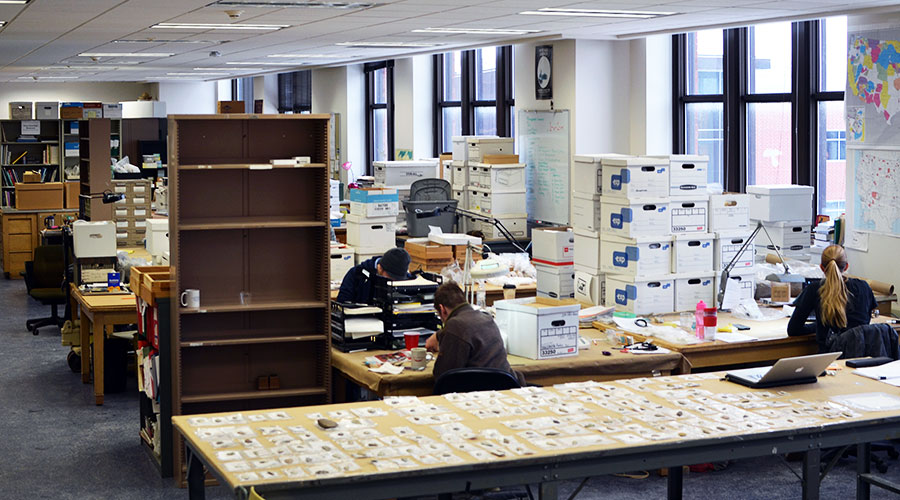The UWM-CRM program is housed in the UWM Archaeological Research Laboratory (ARL) on UWM’s Milwaukee campus in Sabin Hall. The ARL provides space for UWM-CRM offices, materials processing, sample preparation and analysis, and secure curation of archaeological materials. In addition, the ARL maintains a wide variety of field and laboratory equipment including vehicles, essential excavation gear, and computing facilities. Specialized facilities include GIS workstations, photo studio, wet lab equipped with three FlotTech soil flotation units, comparative faunal and floral collections, paleobotanical lab, and compositional analysis lab equipped with polarizing stereomicroscopes and a portable X-ray fluorescence analyzer.
The facilities of the Archaeological Research Laboratory are extensive and are designed to facilitate an integrated approach to archaeological, historical, and architectural-historical investigations. The ARL encompasses 10,000 square feet of space devoted to offices, artifact processing areas, special collections space, microcomputer and main frame computer facilities, photographic and cartographic studios, and storage. The Laboratory owns all the necessary equipment for conducting archaeological and historical field and laboratory investigations including vehicles, total stations, GPS, digital SLR cameras, sifting screens, excavation tools, scales, and microscopes.
ARL special collections include topographic maps, a comparative faunal collection, microfilms of the original land survey records for Wisconsin and Illinois, and artifacts and records from our previous research. The ARL also provides access to the Wisconsin Historic Preservation Database (WHPD), the official online registry of archaeological and historical properties in Wisconsin. As a university program, UWM-CRM has access to the UW System Libraries and other research facilities, fleet vehicles, duplicating services, federally approved accounting services, computing consultants, and the State of Wisconsin liability and worker’s compensation programs.
Sabin Hall also houses an “Exhibition Lab” that maintains a wide variety of equipment for the design and fabrication of interpretive exhibitions including: large scale printing and dry mounting, mat cutting and framing, digital photography, vinyl cutting, plexiglass cutting/bending and wire bending/soldering for the construction of artifact mounts, as well as computers and professional design software.
